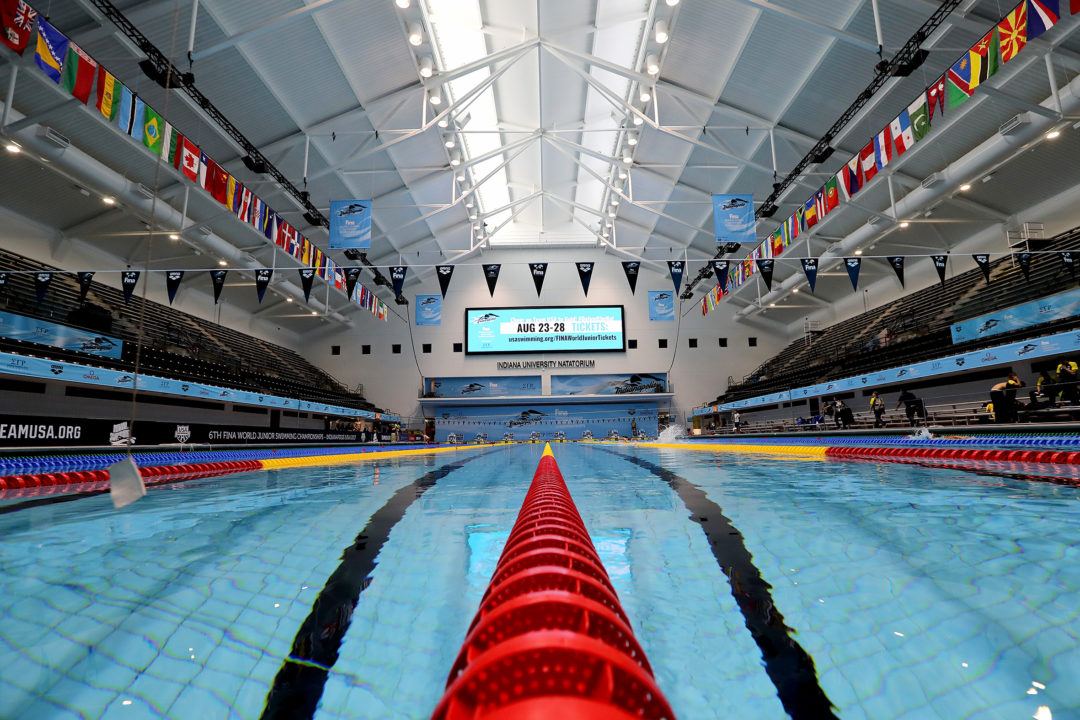World Aquatics (formerly FINA) has outlined the specific requirements athletes must meet in order to compete and set records in the men’s and women’s categories.
In an extensive “Competiton Regulations” document released on Feb. 21, the international governing body for aquatic sports expanded on the new rules initially voted in favor of last June, which included the distinction that transgender women who transitioned after age 12 would not be eligible for sanctioned competition under the World Aquatics banner.
The World Aquatics regulations include the following, with the caveat that any issues athletes have competing in a particular sex category “will be determined by World Aquatics following consultation, as necessary, with one or more independent scientific and medical experts appointed by the World Aquatics Executive. It is an important part of this Regulations that the experts can assess whether a given Athlete meets the eligibility criteria set out below.”
CHROMOSOMAL CERTIFICATION
In order to be eligible to compete in World Aquatics competition, athletes must now certify their chromosomal sex with their national federation. Failure to do so, or provision of a false certification, will render the athlete ineligible.
The national federation must confirm each athlete’s chromosomal sex with World Aquatics prior to each competition, and World Aquatics reserves the right to include a chromosomal sex screen in its anti-doping protocol.
ELIGIBILITY FOR MEN’S CATEGORY
“All male athletes, including athletes with 46, XY DSD, are eligible to compete in World Aquatics competitions and to set World Aquatics World Records in the men’s category, regardless of their legal gender, gender identity, or gender expression.”
A 46, XY disorder of development “is a condition in which an individual with one X chromosome and one Y chromosome in each cell, the pattern normally found in males, have genitalia that is not clearly male or female.”
Female-to-male transgender athletes (transgender men) are eligible to compete in the men’s category. If they are going to compete in high diving or water polo, the athlete has to sign an assumption of risk form, while if they are undergoing treatment involving testosterone or other anabolic substances as part of the female-to-male transition, they must obtain a Therapeutic Use Exemption (TUE).
ELIGIBILITY FOR WOMEN’S CATEGORY
Female athletes must meet the following restrictions in order to be eligible to compete in the women’s category:
1. Athletes who have previously used testosterone as a part of a female-to-male transition but are no longer following the treatment are eligible to compete provided they can establish that:
- (a) the testosterone use was for less than a year in total (i.e., from the date of first use to the date of last use) and did not take place during pubertal growth and development, and
- (b) their testosterone levels in serum (or plasma) are back to pre-treatment normal and any associated anabolic effects have been eliminated.
2. Male-to-female transgender athletes and athletes with 46 XY DSD whose legal gender is female can compete if “they can establish to World Aquatics’s comfortable satisfaction that they have not experienced any part of male puberty beyond Tanner Stage 2 or before age 12, whichever is later.
The term “Tanner Stages” denotes the five stages of puberty during which individuals develop secondary sex characteristics, with Tanner Stage 2 referring to the onset of puberty.
Specifically, the athlete must produce evidence establishing that:
- They have complete androgen insensitivity and therefore could not experience male puberty, or:
- They are androgen sensitive but had male puberty suppressed beginning at Tanner Stage 2 or before age 12, whichever is later, and they have since continuously maintained their testosterone levels in serum (or plasma) below 2.5 nmol/L.
- An unintentional deviation from the below 2.5 nmol/L requirement may result in retrospective disqualification of results and/or a prospective period of ineligibility.
- An intentional deviation from the below 2.5 nmol/L may result in retroactive disqualification of results and a prospective period of ineligibility.
The World Aquatics policies largely align with the transgender policy implemented by USA Swimming last year, which requires male-to-female transgender athletes to provide the following in order to compete:
- Evidence that the prior physical development of the athlete as a male, as mitigated by any medical intervention, does not give the athlete a competitive advantage over the athlete’s cisgender female competitors.
- Evidence that the concentration of testosterone in the athlete’s serum has been less than 5 nmol/L (as measured by liquid chromatography coupled with mass spectrometry) continuously for a period of at least thirty-six (36) months before the date of application.
The previous International Olympic Committee (IOC) policy was 10 nmol/L for female-to-male trans athletes.

Hell, call it an “open” division and “female” division and call it good.
Yeah that would be way easier. But would super dominate wen like ladecky go to open?
So the changes don’t only apply to transgender people but also people with a DSD.
Correct.